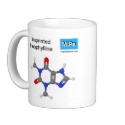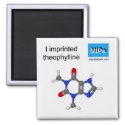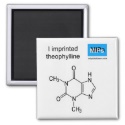|
|
Reference type: Journal
Authors: Matsui J, Nagano J, Miyoshi D, Tamaki K, Sugimoto N
Article Title: An approach to peptide-based ATP receptors by a combination of random selection, rational design, and molecular imprinting.
Publication date: 2009
Journal: Biosensors and Bioelectronics
Volume: 25
Issue: (3)
Page numbers: 563-567.
DOI: 10.1016/j.bios.2009.01.031
Alternative URL: http://www.sciencedirect.com/science/article/B6TFC-4VHGC26-1/2/430105d5eb1590663bb9bf2dcd7d3afe
Abstract: Random selection, rational design and molecular imprinting were cooperatively utilized to develop peptide-based ATP synthetic receptors. In this fusion strategy, combinatorial chemistry was utilized for screening a precursor peptide useful for construction of ATP receptors, and rational design was employed in modification of the selected precursor peptide for higher affinity and selectivity. Finally, molecular imprinting was used for pre-organizing the conformation of the precursor peptide as complementary to a target molecule ATP. The fusion strategy appeared to have advantage to sole use of the individual strategy: (1) a low hit-rate of combinatorial chemistry will be improved by customizing a higher order structure of a selected peptide by molecular imprinting, (2) combinatorial chemistry allows us to semi-automatically select components of water-compatible synthetic receptors, (3) rational design improves the selected peptide sequence for better molecularly imprinted receptors. A peptide consisting of a randomly selected sequence and a rationally designed sequence (Resin-Lys-Gly-Arg-Gly-Lys-Gly-Gly-Gly-Glu-Lys-Tyr-Leu-Lys-NHAc) was designed and synthesized as a precursor peptide. The rational design was made according to the sequence of the adenine binding site of biotin carboxylase. The on-beads peptide was cross-linked with dimethyl adipimidate in the presence of ATP. In the saturation binding tests, the cross-linked on-beads peptide showed 5.3 times higher affinity compared to the non-cross-linked peptide with the same sequence. Furthermore, the cross-linked peptide showed improved selectivity; the ratios of binding constants, K(ATP)/K(ADP) and K(ATP)/K(GTP), were increased from 2.4 to 19, and from 0.8 to 10, respectively. It would be notable that the peptide without the rationally designed sequence showed no discrimination between ATP and GTP (K(ATP)/K(GTP) as 0.9), suggesting that the rationally designed site was successfully engaged for recognition of the adenine base
Template and target information: ATP, adenosine triphosphate
Author keywords: molecular imprinting, combinatorial chemistry, rational design, ATP, molecular recognition, peptides
|


 theophylline template mug ball and stick
theophylline template mug ball and stick







 I imprinted theophylline magnet ball and stick
I imprinted theophylline magnet ball and stick







 I imprinted theophylline magnet
I imprinted theophylline magnet






